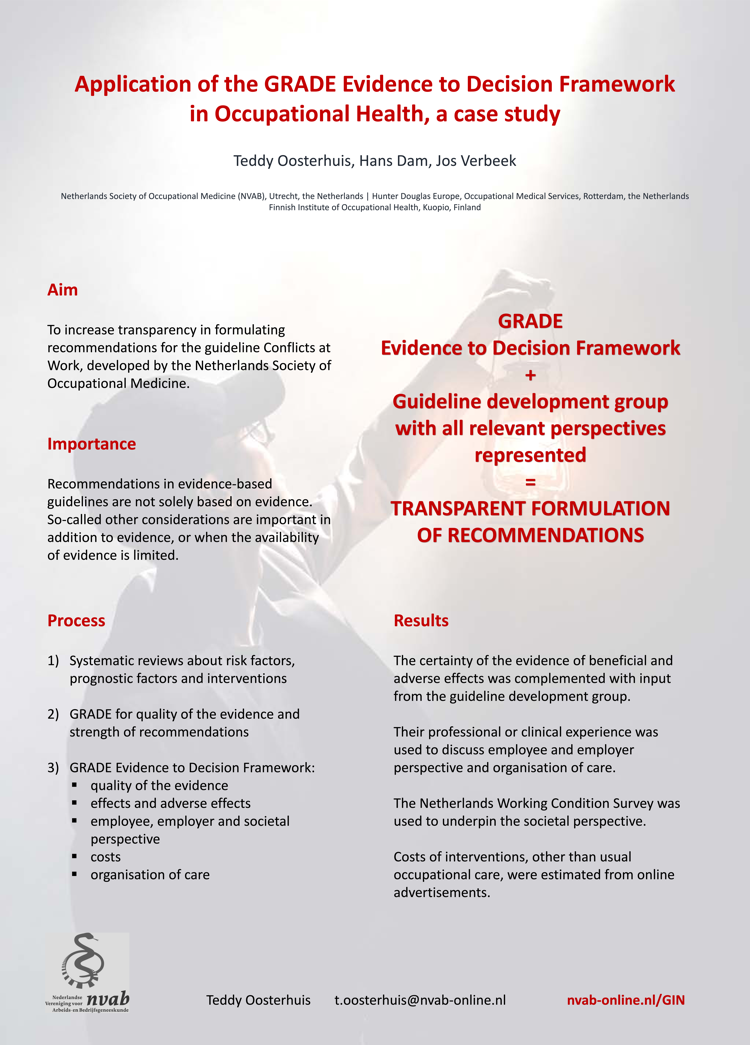Netherlands Society of Occupational Medicine - G-I-N Conference 2019
G-I-N & JBI Conference 2019
The Netherlands Society of Occupational Medicine presented a poster showeing how the GRADE Evidence to decision framework was used to formulate recommendations of the guideline Conflicts at work. You can read more and download the poster below.
Application of the GRADE Evidence to Decision Framework in Occupational Health, a case study
Background
Recommendations in evidence-based guidelines are not solely based on evidence. Other considerations are important, too, particularly when the availability of evidence is limited. This was also the case when the Netherlands Society of Occupational Medicine (NVAB) developed the guideline Conflicts at work. For this guideline we used a new approach to further increase transparency in formulating recommendations.
Methods
Guideline questions were formulated and evidence reviews were performed for risk factors, prognostic factors and interventions, including preventive interventions. After assessing risk of bias, GRADE was used to determine the certainty of the evidence. Subsequently, the GRADE Evidence to Decision Framework was used to formulate and justify the strength of recommendations, taking into account: quality of the evidence, beneficial and adverse effects, employee, employer and societal perspective, costs and organisation of care.
Download the poster: Application of the GRADE Evidence to Decision Framework in Occupational Health, a case study (pdf)
Results
We performed evidence reviews for the questions related to risk factors, prognostic factors and interventions (effectiveness and cost-effectiveness). Due to resource constraints, we did not have these evidence reports available for the other items of the GRADE Evidence to Decision Framework. Furthermore, the search for cost-effectiveness studies of interventions did not yield any relevant articles. We therefore used other sources of information to be able to use all framework items in the formulation of recommendations.
One of the alternative sources was the Netherlands Working Condition Survey, used to underpin the societal perspective. This survey lists the percentage of employees reporting conflicts with either colleagues or supervisors. Furthermore, costs of interventions other than usual occupational care e.g., conflict management training, were estimated from online advertisements.
We used the professional or clinical experience with conflicts at work from the guideline development group members to discuss patient, employee and employer perspectives and organisation of care. Table 1 shows the background of all group members, apart from the chair (occupational physician/researcher occupational medicine) and guideline methodologist. We aimed to have all relevant perspectives represented in the guideline development group.
Download the results including table Guideline development group
Conclusion
Using the GRADE Evidence to Decision Framework, combined with opinions of a guideline development group where all relevant perspectives were represented, enhanced transparency in formulating recommendations for a clinical guideline.

